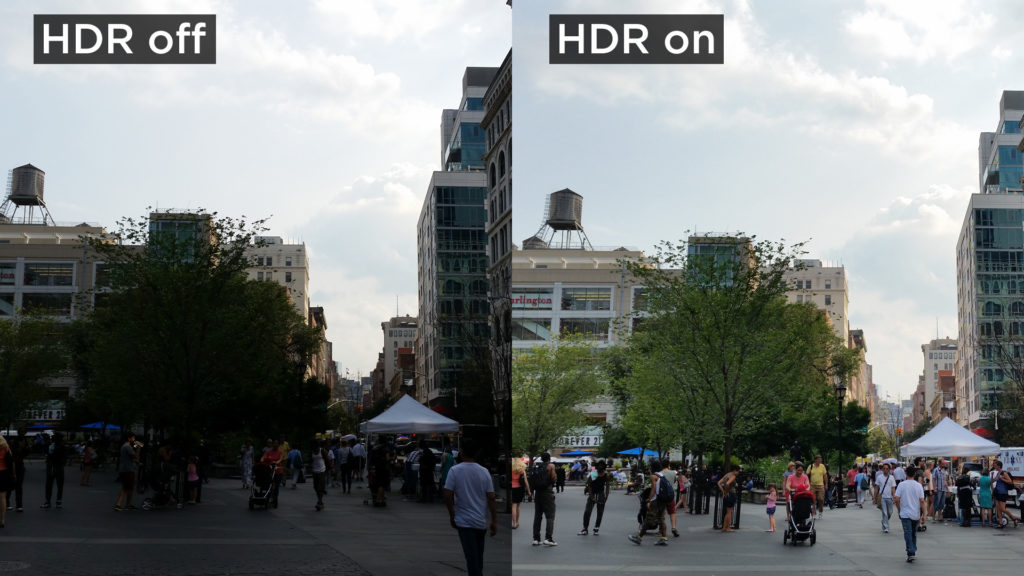You may have noticed but never used HDR mode on your phone or camera. It stands for High Dynamic Range and has its roots in traditional film photography. It’s a technique or mode that captures a wide range of light and dark – the “dynamic range” – in a photo. Digitally, it’s an easy way to create detailed photos with complex tones by combining multiple exposures in one image. HDR takes a bit longer to process once you’ve clicked the shutter because the program is combining three different images into one. The end result is an effect that goes a long way to replicate what your eyes and brain are processing instead of what your camera normally shows.
Scenes with low light or backlighting benefit greatly from HDR. It brightens the foreground or your focal object without negatively affecting the well-lit areas. Landscapes that are brightly sunlit have a lot of light and shadow to work with, so large outdoor scenes offer great contrast for HDR. Outdoor portraits are often taken in the shade because harsh sunlight creates unattractive shadows and glare on faces. But HDR mode takes care of this by mitigating the unflattering effects.
HDR effects can become too extreme, making an image look surreal and strange under certain circumstances. Photos with too much contrast from the combined exposures and colour details can get overwhelming and create an uncanny feel.Images with movement – people, vehicles, wind effects, etc. – can become blurry due to the time it takes for your camera to take three pictures. You might, however, want to capture the movement of water. It’s good to experiment to see for yourself how it operates.Scenes that already have a nice contrast to them can be weakened by HDR mode because of the middling effect of the other images. It can wash out that nice natural shadow or outline. Same with colours – naturally brilliant and deep colours can be weakened or washed out.
When you’re ready to print your HDR photo, it’s important to find good quality printing services that use high-end materials. A boutique, professional printing shop like Printpartner.ca creates archival quality finished products by using the best techniques and equipment in the industry, combined with skilled handcrafted service. They can help you select the best medium to enhance your image and custom fit everything with ready-to-display mounts.
A range of mediums suit the vivid detail and colours of an HDR image. Professional printing services know how to achieve and present a full, accurate spectrum of colour, dynamic range, and detail with little noise or other disruptive effects. Print Partner hires artists and photographers who know how to translate a digital image to canvas, metal, or acrylicfor maximum quality. Lower quality papers and finishes reduce the character of HDR, making it pointless; so, choosing the best and proper medium is just as important as a great photo.
Metallic and acrylic surfaces allow for bold, complex, and vivid colours. Metal prints have superior HD quality and acrylic refracts light for a beautiful shine. Both mediums look spectacular with no frame or border for a contemporary feel. Glossy, satin, or lustre finishes also heighten the dynamic atmosphere and tone of the images, adding depth and even iridescence with a pearl finish. Gloss intensifies blacks and highlights. Satin or lustre adds a nice texture and durability and harkens back to darkroom printing.
Test out your HDR mode next time you’re shooting photos and discover what works for you.
